Roman Culture - Final Exam
1/51
There's no tags or description
Looks like no tags are added yet.
Name | Mastery | Learn | Test | Matching | Spaced |
|---|
No study sessions yet.
52 Terms
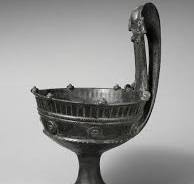
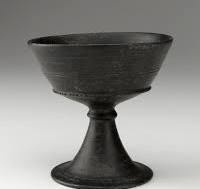
Era: Etruscan
Location: Etruria (Italian Peninsula)
Significance: Etruscan art and culture had a massive influence on Roman art and religion, this is one of many examples of that influence.
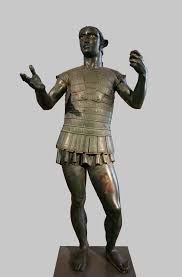
Todi Mars
Era: Etruscan
Location: Etruria (Italian Peninsula)
Significance: Example of cultural synthesis (Greek stance, Etruscan alphabet used to inscribe Umbrian language, donor’s name is Celtic)
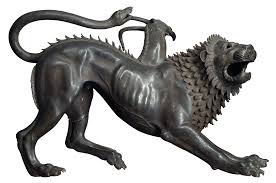
Bronze Chimera
Era: Etruscan
Location: Etruria (Italian Peninsula)
Significance: Highly technical, awareness of Greek mythology, influenced Roman art to demonstrate that art could depict abstract and fantastical subjects.
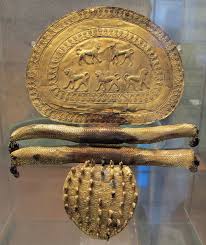
Etruscan Fibula
Era: Etruscan
Location: Etruria
Significance: Used to fasten clothing and display wealth - mostly used in burial rituals

Pyrgi gold tablets
Era: Etruscan
Location: Lazio
Significance: Displays more of Etruscan openness to other cultures, providing a Phoenician translation of Etruscan texts so that the two groups could worship a common goddess together.
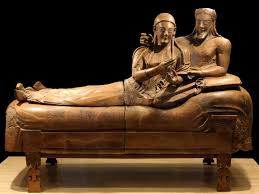
Funerary Sarcophagus
Era: Etruscan
Location: Etruria
Significance: Emphasize the Etruscan belief in the continuation of relationships in the afterlife
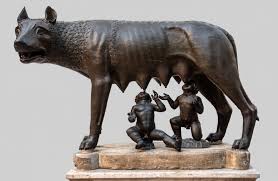
She-wolf
Era: Roman Monarchy
Location: Rome
Significance: depicts the origin story of Rome, done in an Etruscan style
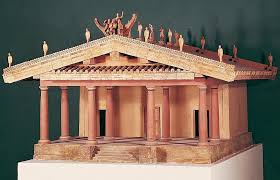
Etruscan style temples
Era: Roman Monarchy
Location: Rome
Significance: Used for religious ceremonies and offerings to the gods, simple

Circus maximus
Era: Roman Monarchy - Republic - Empire
Location: City of Rome
Significance: Location of many public events such as games, chariot racing, and political speeches (especially given by the emperor)
Statues of Olympian Gods
Era: Monarchy - Republic - Empire
Location: Roman Empire
Significance: Typically depicted the gods as larger than mortals, heavily influenced by Greek and Etruscan art


Altar of Domitius Ahenobarbus
Era: Roman Republic
Location: City of Rome
Significance: Stolen from the Greeks, half Greek (more detailed and creative, depicts the marriage of Neptune), half Roman (more shallow, less skilled, depicts real-world scenarios)

Aulus Metellus
Era: Roman Republic
Location: Debated
Significance: Was a child of Etruscan parents that was fully Romanized and became a successful statesman
Large Sanctuaries
Example: Sanctuary of Fortuna Primigenia
Era: Roman Republic
Location: Praeneste
Significance: example of deifying an abstract concept, honors the goddess Fortuna
Portrait Busts of Roman Statesmen
Era: Roman Republic
Location: Rome
Significance: Moving away from only creating art based on the gods or the dead and moving more towards live subjects.
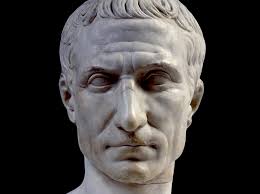
Bust of Gaius ulius Ceasar
Era: Roman Republic
Significance: Can be identified by prominent neck and forehead wrinkles; represents how art was used in Rome for political power and propoganda
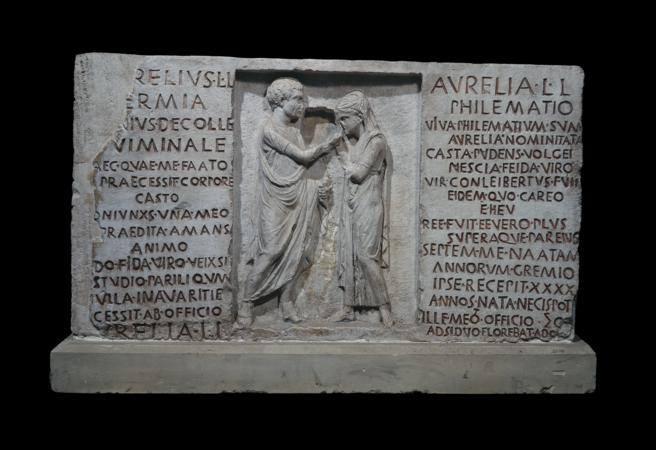
Aurelia Philematium
Era: Roman Republic
Location: Rome
Significance: one of the earliest reliefs to honor the marriage of a former slave, shows love and commitment to wife by spending money to have this done
Roman Forum
Era: Roman Republic
Location: City of Rome
Significance: Center of life in Rome, site of civic, religious, commercial, and political affairs
Forum of Caesar
Era: Roman Republic
Location: City of Rome
Significance: Was a part of Caesar’s urban renewal projects and extended the Roman Forum
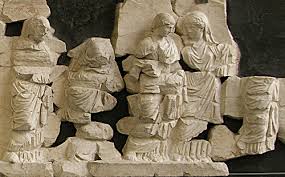
Basilica Aemilia Sabine Women frieze
Era: Roman Republic
Significance: Describes the rape of the Sabine women, one of the founding stories of Rome in which Roman men abducted women from a neighboring tribe because they had no women of their own. This then gave the Romans a taste of conquest.
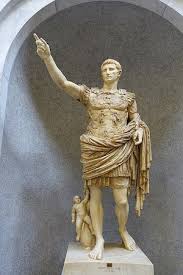
Or other portraits of Augustus
Augustus of Prima Porta
Era: Augustan
Significance: Represents the ways that Romans used art for propaganda, expressing strength and connection to the gods. Portraits of Augustus can be identified by his young age, often wearing a toga (heritage) or a mantel over his head (piety)
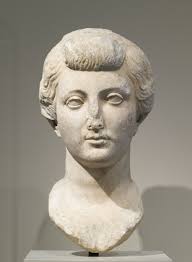
Portrait of Livia
Era: Augustan
Significance: She represented Rome’s first true matriarch, the ideal form of motherhood and piety, and highly influential style to Roman women
Virgil’s Aeneid
Served as the nation’s epic poem, tracing the Trojan hero Aeneas to Italy where he founded the city and solidifying the Roman identity, written specifically for Augustus.
Foundation Tales
Written by Livy
Examples: Romulus and Remus, Rape of Lucretia
Era: Augustan
Significance: Provide tales of origin for the City of Rome, displaying acts of violence as reasons to bring about change and give the city ties back to the gods.
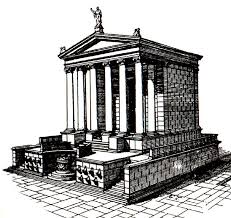
Temple of Deified Julius
Era: Augustan
Significance: Was a cult center, a public meeting place, and a place to spread propaganda. It was dedicated by Augustus to strengthen his ties to Julius
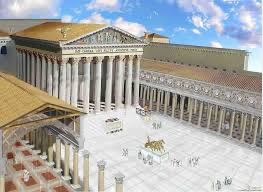
Forum of Augustus
Era: Augustan
Significance: Second Imperial forum to be built, meant to rival Julius’, Included the Temple of Mars
Golden House of Nero
Era: Julio-Claudian
Significance: Was built by Nero after a portion of the city burned down. Demonstrated the aesthetic of Imperial styles of architecture and was a feat of innovative engineering.
Found in Pompeii
Examples: bars (thermopolia), graffiti, Indian goddess ivory
Era: 1st Century AD
Significance: indicated that even the commoners were educated well enough to write. Signify the existence of trade between India and the Roman Empire
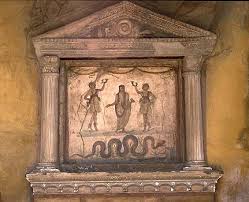
Lararium
Era: 1st Century AD
Significance: Shrines to household gods (lares) responsible for protecting the estate/home
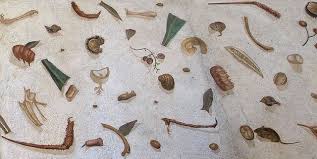
Unswept floor mosaic
Era: 1st Century AD
Significance: Way of showing off wealth - not only could they afford to waste food, but they could afford to have the art on the floor.
Phallic Motifs
Era: 1st Century AD
Significance: believed to bring luck and fertility, also thought to draw the Evil Eye and protect from harm.
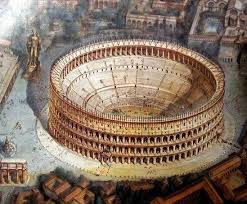
Colosseum
Era: 1st Century AD
Significance: Symbol of Roman power, location of hunts, gladiator battles, and social activities
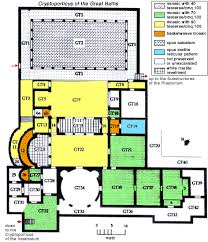
Public Baths
Era: Roman Empire
Significance: location for social activities, place where all people regardless of class could go for free.
Mystery Cult Gods
Examples: Isis, Mithras, Bacchus, Cybele
Era: Roman Empire
Significance: Shrouded in secrecy, members participated in sacred rites, sacrifices and offerings, and commissioned shrines to honor the deity and gain spiritual enlightenment.
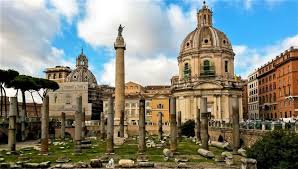
Trajan’s Forum
Era: 2nd Century AD
Significance: Celebrates Emperor Trajan’s military victories and showcases the Roman Empire’s power
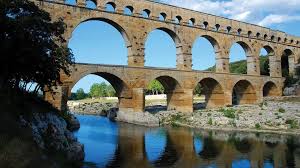
Aqueducts
Era: Roman Empire
Significance: Feat of engineering that allowed Romans a steadier supply of water from distant sources and improved public health by preventing contamination
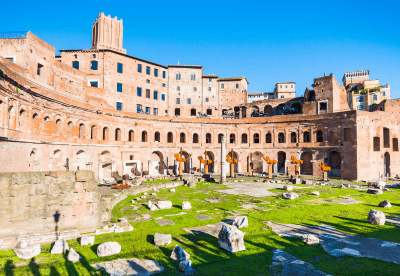
Trajan’s Market
Era: 2nd Century AD
Significance: The first covered shopping mall in existence, contained shops, administrative offices, apartment complexes, and space for community gatherings.
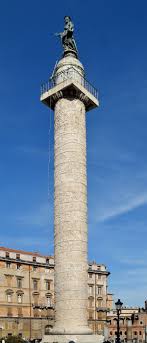
Trajan’s Column
Era: 2nd Century AD
Significance: Provides a visual history of the Dacian Wars and commemorates the Roman Empire’s victory, extremely detailed and located in the Roman Forum
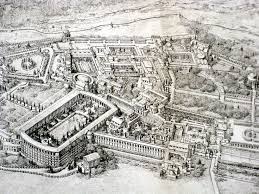
Hadrian’s Villa
Era: 2nd Century AD
Significance: Incorporating architectural aspects and art from places that had most impressed him during his travels, allowed visitors to experience something they had never seen anywhere else in the world.
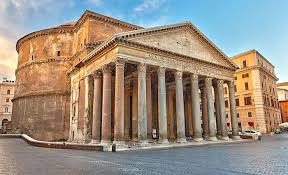
Pantheon
Era: 2nd Century AD
Significance: had many purposes throughout Roman history, including as a temple, fortress, mausoleum and church, depicting the evolution of Roman culture.
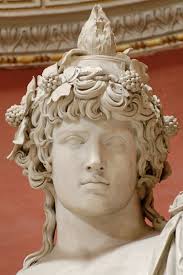
Portraits of Antinous
Era: 2nd Century AD
Significance: He was a lover of Hadrian, after his death, Hadrian commissioned portraits of him depicted in a similar fashion to Apollo.
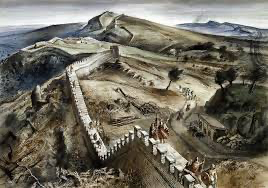
Hadrian’s Wall
Era: 2nd Century AD
Significance: Most visible of the Roman frontiers, also shows how the Romans organized military zones and shows defensive techniques and strategies.
Artifacts from Vindolanda
Letters between Wives
Era: 2nd Century AD
Significance: Roman soldier’s wives were literate enough to write to each other despite not being upper-class
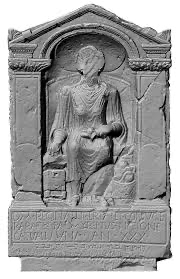
Regina Tombstone
Era: 2nd Century AD
Significance: Freedwoman married to a more privileged man who had this expensive tombstone created for her that shows his love for her.
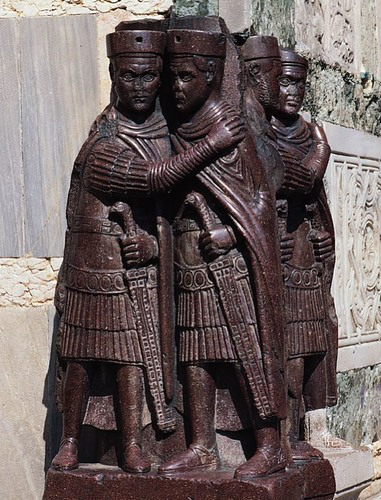
Emperor Portraits (tetrarchs)
Era: 3rd Century AD
Significance: displays the political instability and division of power during the late Roman Empire
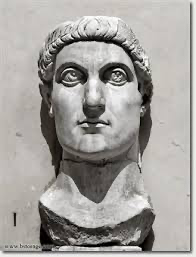
portraits of Constantine
Era: 4th Century AD
Significance: Marks the first Christian emperor of Rome and the shift in political and religious history; can be distinguished because he is looking up (toward the heavens)
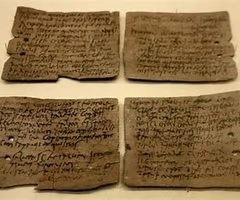
Stylus and Tablets
Era: Roman Empire
Significance: Used for writing and record keeping, especially useful for education
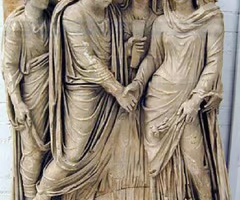
Depictions of Married Couples
Era: Roman Empire
Significance: Depicts Roman social and marital relationships, often used in funerary art.
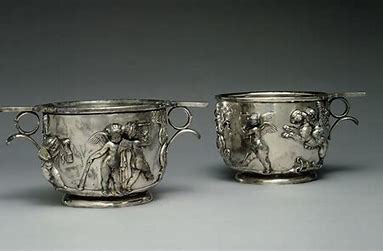
Artifacts associated with banqueting
Era: Roman Empire
Significance: Central to Roman dining customs and highlights the importance of feasting
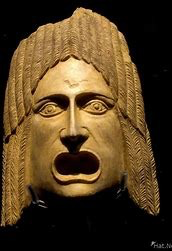
Roman Theatrical Masks
Era: Roman Empire
Significance: Used in theatrical performances and highlighting the vibrant culture of Rome

Early Christian artifacts and Motifs
Example: Chi-Rho, Fish
Era: Roman Empire
Significance: Represents the spread of Christianity and its early art and symbols

Asclepius Statue
Era: Roman Empire
Significance: Reflects the importance of health and healing, God of Medicine, related to the Hippocratic oath
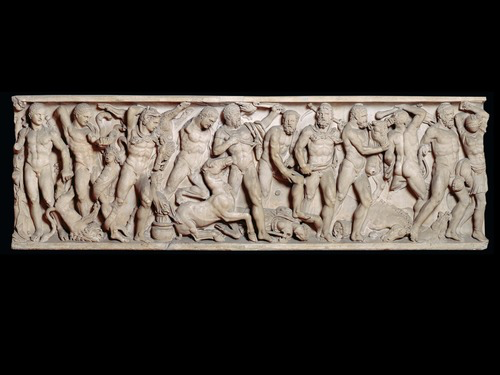
Hercules Sarcophagus
Era: Roman Empire
Significance: Illustrates the myth of Hercules and symbolizes strength and heroism, used in funerary art